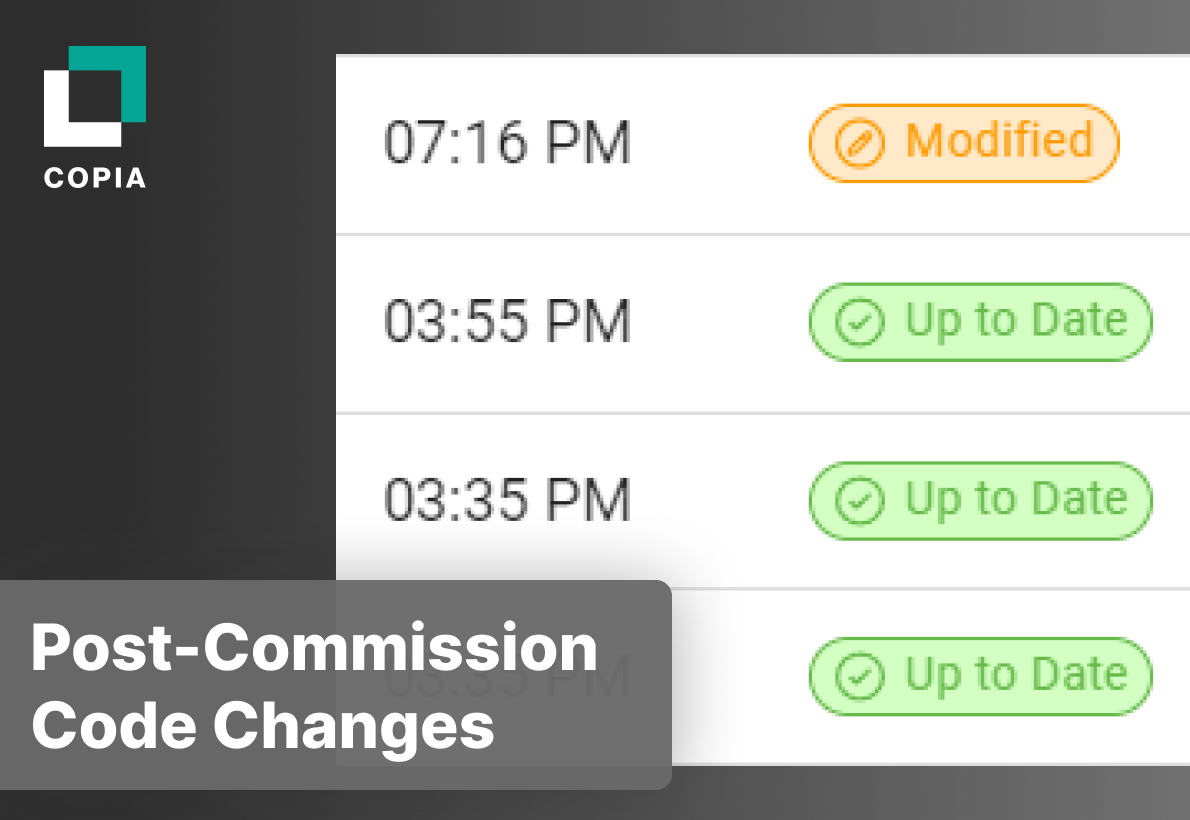There are several reasons why you might have control logic change after commissioning and powering on a machine. Sometimes, you may not even be aware that anything has changed.
Here are some examples of situations where PLC code may be changed on the shop floor, and how Copia can help you securely track those changes.
Hardware change
- An Axis Load Encoder was vibrated or knocked off the machine, so you need to reinstall or replace the sensor, and reset the axis home position.
- An I/O card died, and you have a compatible, although not identical, replacement on hand; you’ll have to update the hardware configuration on the PLC
Reworking parts or custom runs of parts
- If you get a custom order of parts that requires different build parameters, e.g. a custom recipe file, or if you are reworking parts from a prior, possibly unfinished batch, you may need to modify the PLC files to apply different parameters, or perhaps skip some steps in the sequence.
A change in the environment is causing inconsistent or flawed machine output
- Electricians installed new overhead lights, which has affected your part inspection, due to increased levels of ambient light
- Someone opened the garage door to the factory, so humidity has risen and epoxied parts need to stay in the vacuum desiccator for longer
The physical assembly has been modified or moved, so motion positions need to be adjusted
- Someone removed the end-of-arm-tool (EOAT) from a Pick and Place machine for cleaning and maintenance, and now the tool center-point (TCP) is slightly off; just enough for the tool to miss incoming parts. The PLC program gets adjusted by adjusting a configured offset to the Cartesian coordinate system
The machine is on fire (figuratively or literally)
- Hell has broken loose: there’s a bug that didn’t get caught during initial testing, and your machine is ejecting unfinished parts. You manage to turn the machine off, but now the whole production line is on hold. In a situation like this, a controls engineer or technician may be able to quickly correct the issue and get production moving again by modifying the PLC logic
No matter the reason, it’s important to recognize that machine code is occasionally updated after a machine’s initial installation and commissioning, and routinely tracking those updates securely, with a clear view into what exactly changes, can be a huge benefit for any Industrial Controls team.
This is exactly what Copia set out to do with its new product, DeviceLink™, which acts as a digital worker to backup automation devices on a plant floor, both automatically, as well as on-demand. By closely tracking PLC code updates on actual hardware, and with the ability to easily and visually compare backups against one another, and against development code tracked with Copia’s Git-based Source Control, DeviceLink™ can help your team reduce machine downtime, maximize quality throughout a machine’s lifespan, and improve development for future projects. Learn more about DeviceLink™ here.





